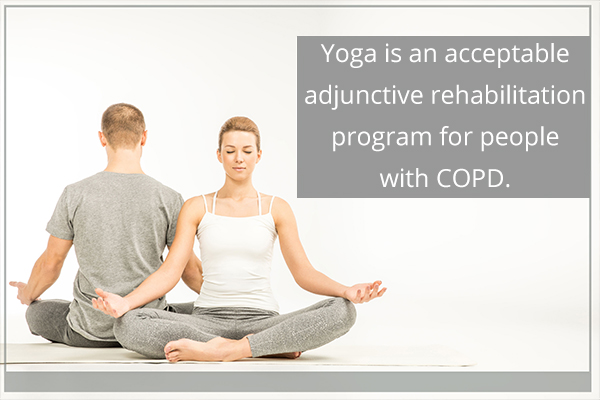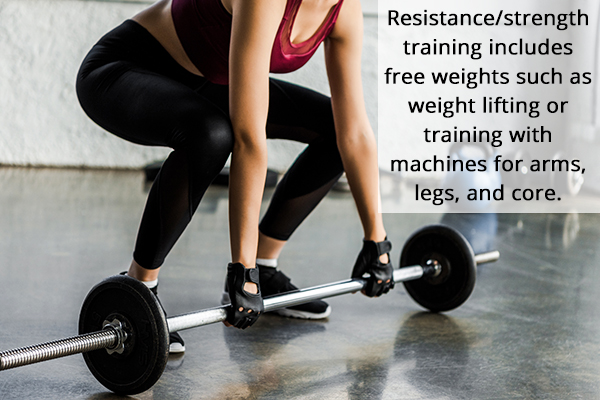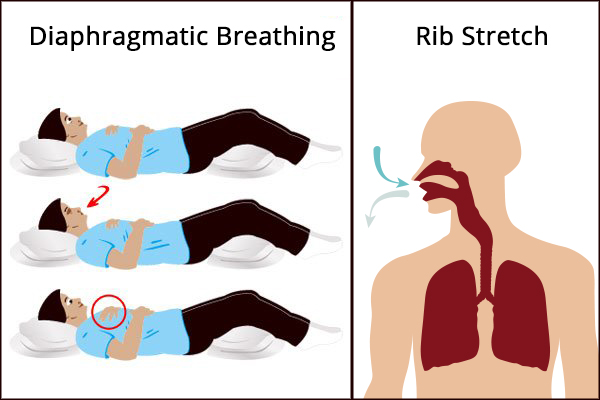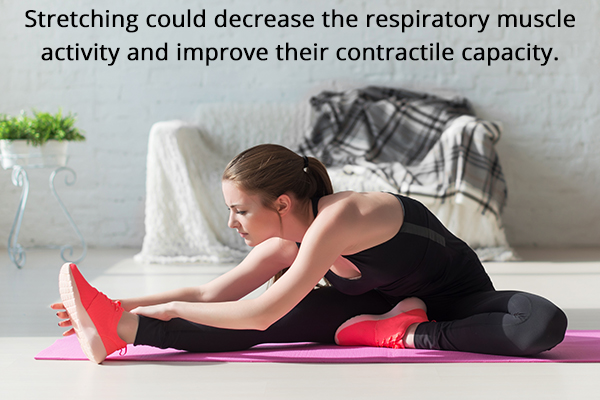In this article:
The lungs are a part of the respiratory system that assists in breathing. During breathing, carbon dioxide is exhaled, and oxygen is inhaled into the bloodstream.

The oxygen is further supplied throughout the body and is used to generate energy. (1) Hence, lung health is very crucial for overall health and quality of life due to its essential role in supplying oxygen to the body.
When the lungs are affected, the quality of everyday life is significantly compromised, which is disabling.
Causes of Lung Problems

Lung diseases are some of the most common medical conditions in the world. A multitude of causes can jeopardize the health of the lungs, such as:
- Genetics
- Cigarette smoking
- Infections
- Dust
- Pollution
- Occupations such as mining, textile milling, shipbuilding, sandblasting (2)
Tiny particles that evade getting cleared by the airways reach the lungs and collect there. This activates the immune cells such as neutrophils and macrophages in the alveoli and triggers inflammatory reactions in the lungs. (3)
Chronic ongoing exposure to such particles can cause irreversible damage to the lungs and lead to a decline in lung function. (4) Hence, appropriate measures should be taken to protect the lungs from any such exposure.
Common symptoms of damaged lungs are:
- Difficulty breathing
- A feeling of receiving inadequate air, especially on exercising and exertion
- Dry or productive cough with or without blood
- Chest pain
- Fatigue
- Weight loss
As age increases, the airways and blood vessels become stiffer, (5) lowering the working efficiency of the lungs.
In addition, osteoporosis associated with old age causes changes in posture that can stiffen the chest wall. This hinders the chest from fully expanding on breathing, thus reducing the volume of air the lungs can hold. (6)
Moreover, your diaphragm, the muscle that supports breathing, also weakens with age, further making it harder for the lungs to perform its functions. Damaged lungs due to other causes, apart from aging, lead to a premature reduction of the life span of an individual. These factors include:
- Smoking
- Exposure to air pollution
- Repeated respiratory infections
The functioning of the lungs can be evaluated using various tests such as spirometry, diffusion capacity, lung volumes, and a 6-minute walk test, to name a few. (7) Other modalities include visualizing the lungs through imaging such as X-ray and CT scan.
It is essential to monitor the health of a damaged lung by regular visits to the physician to treat or halt the progression of damage. Numerous medications are available to treat lung diseases such as asthma, chronic obstructive pulmonary disorder (COPD), lung cancer, pulmonary fibrosis, and pneumonia.
Exercises That Increase Lung Capacity
Regular exercise leads to numerous and varied physiological changes that are beneficial from a health standpoint. As physical fitness improves, your body becomes more efficient at getting oxygen into the bloodstream and transporting it to the working muscles.
Exercise positively impacts functional parameters such as lung mechanics, chest kinematics, metabolism, and peripheral and respiratory muscle function. One of the largest differences between an exerciser and a non-exerciser is the heart’s ability to pump blood and consequently deliver oxygen to working muscles.
In addition, an exerciser typically has a larger blood volume and is better able to perform gaseous exchange with the air than a sedentary individual. (8)
People with long-term lung conditions can help improve their symptoms through regular exercise. Physical exercise is recommended for asthmatics: it improves bronchial hyperresponsiveness, exercise-induced bronchoconstriction, lung function, and exercise capacity, thus improving the overall quality of life.
Once the lungs are damaged, lung function loss cannot be reversed, but lung capacity can be restored and even enhanced. Lung capacity is the maximum amount of oxygen your body can use.
Exercising can increase heart rate and makes you breathe harder. Therefore, the amount of oxygen with each breath increases, thus increasing the lung capacity. Exercise also improves cardiorespiratory and skeletal muscle function and thereby reduces dyspnea (9) and fatigue, thus improving quality of life. (10)(11)
Some exercises that can help increase lung capacity are:
1. Aerobic exercise
Lung capacity can be controlled and improved by 5%–15% through aerobic workouts. Training can improve endurance and reduce breathlessness. Aerobic activities such as walking, running, or jumping rope give your heart and lungs the kind of workout they need to function efficiently.
People with COPD use more energy to breathe than those without, and thus exercise can improve their quality of life.
2. Yoga

Breathing exercises or yoga and pranayama primarily modify the pattern of breathing to reduce hyperventilation, resulting in the normalization of carbon dioxide levels in the blood.
In fact, yoga is an acceptable adjunctive rehabilitation program for people with COPD (12) because it consists of movement-coordinated breathing and low-impact fitness. Yoga programs improve exercise capacity and life quality and also reduce bronchospasm, which causes breathlessness.
In addition, they help change behavior, decrease anxiety, improve immunological parameters, and improve endurance of the respiratory muscles that may ultimately help people with asthma too.
Breathing exercises or yoga and/or pranayama may benefit children with chronic (mild and moderate) and uncontrolled asthma. (13)
3. Interval training
Cardio sessions with short spurts of intense exercise yield optimal results. During interval training, intervals of high-intensity exercise are alternated with periods of rest or lower-intensity exercise. (14)
4. Going to high-elevation areas
The lungs have to strive harder to obtain optimum oxygen at high elevation, a great way to increase your lung capacity.
5. Muscle-strengthening activities
Exercises such as weightlifting and Pilates build core strength, improve posture, and tone the breathing muscles. Aerobic activities and muscle-strengthening activities together benefit the lungs tremendously.
6. Resistance training

Resistance/strength training has a greater potential to improve muscle mass and strength than endurance training. (15) During resistance/strength training, individual muscle groups are trained by repetitive lifting of weights.
One potential benefit is that resistance exercise results in lower oxygen consumption and minute ventilation, (16) thus evoking less shortness of breath, which may be advantageous for people who are less tolerant of endurance training. Resistance/strength training includes free weights such as weight lifting or training with machines for arms, legs, and core.
7. Upper extremity exercise
This exercise requires the use of the hands plus the concerted action of other muscle groups that are used in the upper torso and arm positioning. (17)
Some of these muscle groups serve a dual function (respiratory and postural), and the use of the muscles for arm exercise decreases their capacity to participate in ventilation.
A few studies suggest a possible effect of arm training on respiratory muscle function. (18)
8. Lower extremity exercise
Exercises such as stationary cycling, walking on a treadmill, or free walking may help. In general, the training load must be greater than the loads the patient experiences in daily life and should progress as the patient’s endurance improves.
Improving skeletal muscle function reduces the ventilatory demands of exercise and improves exercise capacity. Increased exercise endurance has been demonstrated following lower extremity exercise programs in people with COPD. (19)
9. Endurance training
Doing core and upper body training, such as regular weight training, can increase bone strength.
Moreover, exercises such as chest and shoulder presses and deadlifts can strengthen the chest, shoulders, and back muscles. This helps in maintaining a breathing-friendly posture and increases lung capacity.
10. Breathing retraining

Respiratory muscle training, especially inspiratory muscle training, induces improvement in inspiratory muscle force and endurance. It also helps increase functional exercise capacity and breathlessness in people with a chronic respiratory illness such as COPD.
People with lung disease may have a rapid shallow breathing pattern, which is thought to be deleterious to ventilation and gas exchange. (20) Performing certain breathing exercises improves vital lung capacity by strengthening the muscles assisting in respiration.
Optimization of breathing improves lung capacity, stamina, and endurance by altering the respiratory strength and anaerobic tolerance.
Retraining with breathing techniques that decrease breathing frequency, such as yoga and pursed-lip breathing, have led to increases in tidal volume and oxygen saturation in some studies. (21)(22)
Here are two breathing exercises you can try:
a. Diaphragmatic breathing
This technique aims to increase tidal volume by focusing on diaphragmatic descent.
- Place one hand on the abdomen and the other hand on the chest.
- Inhale by contracting the diaphragm and expanding the abdomen. Inhale slowly through the nose. During inhalation, only the hand on the abdomen should rise, and the hand on the chest should move minimally.
- Slowly exhale via the mouth.
- Each inhalation or exhalation should be slow and complete with a goal of six to eight respirations per minute.
b. Rib stretch
- Stand upright and exhale all the air out of your lungs.
- Breathe in slowly and allow your lungs to fill to maximum capacity.
- Hold the air in for 20 seconds, if possible. While you are counting, place your hands on your hips, thumbs facing forward, and pinkies toward the back.
- Relax and exhale slowly.
- Repeat three times. (23)
11. Ventilatory muscle training
The hyperinflation in COPD leads to flattening and shortening of the diaphragm, anatomically reducing its pressure-generating capacity. Ventilatory muscle training attempts to increase the strength and/or endurance of the ventilatory muscles.
12. Tai chi
This systematic callisthenic exercise originated in China. Tai chi is recognized as an exercise of moderate intensity in people with COPD. (24) It is generally safe and results in better functional capacity and pulmonary function.
A short-form of tai chi, Sun style, is also applied in COPD management and offers a moderate exercise intensity. (25)
13. Playing a wind instrument or singing
These activities may also be done as they improve lung capacity and breathing.
14. Swimming
Water adds an element of resistance, making the body and lungs work harder to supply oxygen.
15. Stretching techniques

Stretching could decrease respiratory muscle activity and improve their contractile capacity. (26)
Respiratory muscle stretching, associated with aerobic training, reduces respiratory muscle activity during exercise and improves lung volumes and capacities by increasing the abdominal contribution.
Respiratory muscle stretching improves functional exercise capacity. It also decreases the risk of developing conditions such as stroke, heart disease, diabetes, and hypertension.
Final Word
Lung health is a vital component of your overall health and well-being. While the respiratory organs have a natural defense system to help protect the lungs, it is important to take steps toward maintaining your lung health. This also helps reduce the risk of lung diseases.
Moreover, regular exercise produces abundant beneficial changes that together make the body become efficient and also increase lung capacity.

- Was this article helpful?
- YES, THANKS!NOT REALLY


